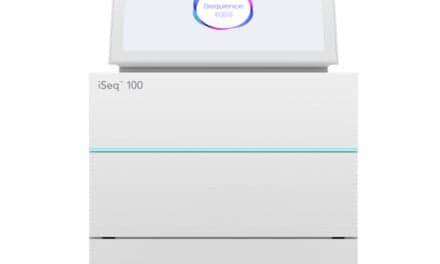Exploring a variety of testing methods for a vital hormone
By Karen Appold
Vitamin D is a hormone found in almost every human tissue and cell. Maintaining an adequate vitamin D level plays a key role in the optimum functioning of tissues and cells, and is thought to reduce one’s risk of bone fractures, autoimmune diseases, type 2 diabetes, cancer, hypertension, immune dysfunction, and inflammation.
Conversely, vitamin D deficiency increases the risk of cardiovascular diseases by causing disruptions in the regulation of the renin-angiotensin system. A deficiency can also lead to rickets in infants and osteomalacia in adults.
People at risk for vitamin D deficiency include those with inadequate sun exposure, limited oral intake, or impaired intestinal absorption. Factors believed to be associated with vitamin D deficiency include darker skin pigmentation, being an older adult, being exposed to little sunshine, living at higher latitudes, obesity, covering your skin, kidney disease, genetic factors, and malabsorption syndromes such as Crohn’s disease, Celiac disease, and cystic fibrosis.
In the National Health and Nutrition Examination Survey, 2005–2006 data were analyzed for vitamin D levels in almost 4,500 adult participants. Vitamin D deficiency was defined as a serum 25-hydroxy vitamin D concentration less than or equal to 20 ng/mL (50 nmol/L). Among participants in the survey, the overall prevalence rate of vitamin D deficiency was 41.6%. The highest rate was reported among blacks (82.1%), followed by Hispanics (69.2%).
To reduce the risk of all types of skeletal fractures, patients who have low bone mineral density or a prior low-impact (fragility) skeletal fracture, and those at risk of falling, should be evaluated for vitamin D deficiency. Patients with chronic kidney disease should also be tested.
LAB TESTING OPTIONS
Two laboratory tests for vitamin D are available: 25-hydroxy vitamin D, referred to as 25(OH)D, and 1,25-dihydroxyvitamin D.
“The test for vitamin D needs to be requested, because it is not typically a part of the standard metabolic profile routinely ordered by physicians,” says Kim Larson, RDN, a registered dietitian nutritionist and board-certified sports dietitian, spokesperson for the Academy of Nutrition and Dietetics, and founder of Total Health, in Seattle.
Vitamin D status can be determined using radioimmunoassays, competitive protein-binding assays, high-pressure liquid chromatography, and liquid chromatography-tandem mass spectrometry. Such varied testing technologies may yield different results, with intra-assay variation reaching as much as 10%, and inter-assay variation at lower serum levels reaching as much as 25%.
Although liquid chromatography-tandem mass spectrometry (LC-MS) is considered the gold standard technology for vitamin D testing, measurement of serum 25(OH)D levels is frequently performed using immunoassays—and especially radioimmunoassays. “There is significant disparity among the immunoassays, and all immunoassays have considerable bias compared with LC-MS methods,” says John P. Higgins, MD, associate professor of medicine and chief of cardiology at the Lyndon B. Johnson General Hospital, University of Texas Health Science Center at Houston (UTHealth). “Because of variations among the results from these different assays, it is necessary that assay-specific reference ranges be established, or that the assays and their results be standardized.
“The optimal serum concentration for vitamin D has not been established, and it may change across different stages of life,” says Higgins. “Similarly, there is currently no consensus on target serum levels of vitamin D.”
However, scientists and clinicians do appear to have achieved consensus on the definition of vitamin D deficiency, as levels less than 25 nmol/L when measured using the 25(OH)D test. This consensus is based on the level below which individuals run the risk of developing diseases such as rickets and osteomalacia.
“Higher target serum levels have also been proposed, based on subclinical end points such as parathyroid hormone,” says Higgins. Consequently, two conservative target serum levels are usually adopted:
- 25 nmol/L (based on the risk of rickets and osteomalacia).
- 40–50 nmol/L (based on vitamin D’s interaction with parathyroid hormone).
Current data suggest that cut-points should be assay-specific rather than universal, and that greater harmonization between laboratories is required. However, newer assays using alternative biological samples to determine circulating 25(OH)D levels have been proposed. Advances in understanding the genetics of vitamin D and the role of vitamin D-binding protein may improve the accuracy of future assays.
GETTING ENOUGH D
According to the Institute of Medicine’s Food and Nutrition Board, for individuals aged 1 to 70 the recommended dietary allowance for vitamin D is 600 IUs per day. For people older than 70, the recommended allowance is 800 IUs per day.1,2 Good sources of vitamin D include salmon, tuna, sardines, egg yolks, and vitamin D-fortified foods such as milk, soy milk, cheese, yogurt, margarines, orange juice, ready-to-eat cereals, and mushrooms.
Dietary sources notwithstanding, humans derive vitamin D mainly by way of endogenous ultraviolet-B-induced synthesis in the skin, says Higgins. The current high prevalence of vitamin D deficiency can therefore be attributed largely to lifestyle-related low sunlight exposure.
Regulation of bone and mineral metabolism is a classic vitamin D effect. But researchers’ identification of vitamin D receptors in almost all human cells suggests a role for vitamin D in extraskeletal health as well.
Larson believes that more randomized, controlled clinical studies need to be done to further evaluate and substantiate the role of vitamin D in preventing cardiovascular disease, cancer, diabetes, and autoimmune diseases. The levels needed for optimal health, while reducing risks of negative health effects, need to be determined, she says.
“Scientific experts on vitamin D do not agree on what levels are needed for optimal health and prevention of disease,” says Larson. “Many experts feel that the current daily levels set at 600 IUs are still too low—so this debate will continue.”
TODAY’S TESTING CHOICES
The current marketplace offers a variety of clinical laboratory tests for vitamin D testing. Cerilliant Corp, a Sigma-Aldrich company based in Round Rock, Tex, offers Certified Spiking Solutions for analyzing 25-hydroxyvitamin D2 and 25-hydroxyvitamin D3, including stable labeled 25-hydroxyvitamin D3, 1a, 25-dihydroxyvitamin D3 and 1a, 25-dihydroxyvitamin D2, the biologically active forms of vitamin D, as well as vitamin D2 (labeled and unlabeled) and vitamin D3 for monitoring blood/serum calcidiol levels by LC/ultraviolet (UV) or LC-MS/MS. Various concentrations are available.
Such certified solutions are suitable for critical quantitative applications in research and clinical environments, including use in preparing controls and calibrators for LC/UV and LC-MS/MS assays, as system-tuning/suitability standards, linearity verification, internal proficiency testing, and for original equipment manufacturer use in preparation of reagents, development of assays, and instrument installation qualification/operational qualification.
“The stable, quantitative solution format provides significant benefits to the user, including increased efficiency of labor and convenience of use,” says Cerilliant vice president Mitzi Rettinger. “The shelf-stable Snap-N-Spike format enables laboratories to eliminate painstaking weighing of sensitive and difficult compounds like vitamin D and its hydroxy metabolites, and provides labs the flexibility to spike a known concentration of analyte into their matrix of choice.”
Accurate preparation of a quantitative reference is critical for accurate assessment of patient vitamin D levels. Cerilliant certified Snap-N-Spike solutions are prepared and certified to a number of industry standards, including ISO Guide 34, ISO 17025, and ISO 13485. “To minimize uncertainty, these solutions are gravimetrically prepared using precision balances, flame sealed into ampoules under argon lighting to extend shelf life, and rigorously tested through accelerated and real-time studies to ensure accuracy and shelf life,” says Rettinger. Snap-N-Spike reference solutions are supported by comprehensive certificates of analysis that provide all analytical data and uncertainty and traceability information to support regulatory requirements.
The 25-OH Vitamin D Total ELISA test by Gold Standard Diagnostics features a unique pretreatment step that allows for easy automation on virtually any open ELISA processor. The competitive assay strongly correlates with established LC/MS, EIA, and chemiluminescent methods, and offers high sensitivity (1.5 ng/mL) and specificity (D3–100%; D2–83%) over a wide dynamic range (0 to 180 ng/mL).
“Because of the simple pretreatment step and automation capability, GSD’s 25(OH)D test provides fast and consistent results,” says Gerrit Mueller, product manager for Gold Standard Diagnostics, in Davis, Calif. “All steps of the assay protocol are completed in a standard 96-well microtiter plate, without the need for labor-intensive, time-consuming, and complicated pretreatment done manually outside of the analyzer.”
For labs or physicians with smaller volumes, the prohibitive cost and volume requirements of a high-throughput system can make running vitamin D tests in-house difficult to justify financially. Gold Standard Diagnostics has created an ELISA that can be fully automated and cost-effective even if only a few samples are run per week.
The new 25(OH)D test by Poway, Calif-based Diazyme Laboratories is an enzyme immunoassay that measures total true 25-hydroxy vitamin D levels (D2 and D3 levels) in both serum and plasma samples. “The assay fully automates the removal of nonspecific protein binding and cross-reactivity that may occur in competing assays, thereby ensuring that results will be both precise and accurate,” says Douglas Borses, director of sales and marketing at Diazyme Laboratories.
Diazyme’s 25(OH)D assay is both fast and flexible, with complete testing results in less than 2 hours. “The test is user-friendly, and can be performed manually or easily adapted for use on a wide range of fully automated microtiter plate readers, making it suitable for use in laboratories of all sizes and with all manner of testing needs,” says Borses.
Abbott’s Architect 25(OH)D assay is a fully automated and cost-effective immunoassay that helps laboratories provide rapid and accurate results while managing their increasing vitamin D testing volumes. “Research suggests that measuring vitamin D levels with the 25-hydroxyvitamin D test is ideal because it is the most prominent circulating form of vitamin D in the body, and it is easily measured,” says Beth Schodin, PhD, scientific affairs manager for diagnostics at Abbott Laboratories, in Abbott Park, Ill.
“With a simple blood test, the Architect 25(OH)D assay can measure 25-hydroxyvitamin D in human serum and plasma to assess vitamin D sufficiency,” says Schodin. The Architect assay exhibits total CV rates of less than 10% in the measurement range, and has low cross-reactivity to the C3 epimer of 25(OH)D, a form of vitamin D that is commonly found in infants and has also been shown to be present in adult serum.
The Liaison 25(OH)D Total assay by DiaSorin, Stillwater, Minn, uses chemiluminescent immunoassay technology to quantify circulating 25-hydroxyvitamin D in patient samples. The fully automated two-step assay directly measures 25(OH)D in human serum, and detects both 25(OH) vitamin D2 and D3 metabolites in order to estimate total circulating 25(OH)D in the body. The Liaison 25(OH)D Total assay has a time to first result of 35 minutes and a dynamic range of 4.0 to 150 ng/mL.
Karen Appold is a contributing writer for CLP. For more information, contact CLP chief editor Steve Halasey via [email protected].
______________
REFERENCES
1. Institute of Medicine, Food and Nutrition Board. Dietary Reference Intakes for Calcium and Vitamin D. Washington, DC: National Academy Press, 2010. Available at: http://ods.od.nih.gov/factsheets/VitaminD-HealthProfessional. Accessed January 17, 2014.
2. Newberry S, Shekelle P, Booth MS, et al. Vitamin D and Calcium: A Systematic Review of Health Outcomes (Update). Draft Evidence Report no. XX. (Prepared by the Southern California Evidence-Based Practice Center under contract no. HHSA290201200006I.) AHRQ publication no. XX-EHCXXX-EF. Rockville, MD: Agency for Healthcare Research and Quality, 2014. Available at: www.effectivehealthcare.ahrq.gov. Accessed January 17, 2014.







